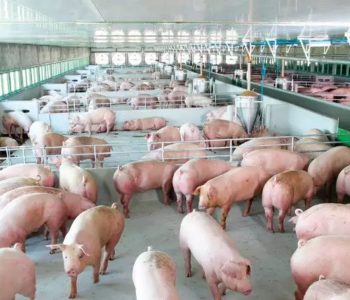A group of researchers from the University of Cambridge have developed an animal welfare assessment system that allows to perform reliable comparisons between different types of pig farming systems. Enabling a proper evaluation of welfare levels alongside other impacts of livestock farming to identify the best farming systems.
This information is crucial for improving welfare in livestock production at a time when global meat demand is increasing and the way animals are raised is changing, with concerns about animal well-being in both intensive and extensive systems. The assessment of welfare levels can also enable consumers to make more informed choices when selecting products of animal origin.
The United Kingdom has several labeling schemes for meat products to assure consumers that certain standards have been met. The aforementioned team of researchers, used their new system to test how different labels compare in terms of animal welfare.
“We have demonstrated that it is possible to reliably assess animal welfare on farms. This means that decisions about which types of farms are better or worse for animal welfare can be based on proper calculations, rather than assumptions as is currently the case,” explain the authors of the study.
“Animal welfare can now be included in overall farm sustainability assessments along with other measures such as carbon emissions and impacts on biodiversity. Allowing us to make make informed decisions regarding farming systems and what we choose to eat.”
Nevertheless, achieving a universal measure for animal welfare has proven to be difficult for researchers due to conflicting opinions on the key factors that should be considered as the most significant. For example:
“Is a health issue more important than a behavioral problem? What level of welfare is good enough?”
The novel system assesses the well-being of animals by employing a comprehensive range of criteria. This enables the establishment of a connection between animal welfare and other consumer concerns, such as the environmental impact of livestock production.
The pig evaluation system examined a range of factors, encompassing health issues like: coughing, sneezing, and lameness, as well as their behaviors, including ear or tail biting. Additionally, it assessed the animals’ interaction with their environment.
Various scoring methods were employed, with distinct weights assigned to different aspects of animal welfare, across 74 pig farming systems in the United Kingdom.
“Despite the ongoing debate about how to measure animal welfare, we found that we can identify which types of farms we might want to encourage and which ones we might not, with reasonable consistency.”
The researchers state that their work may pave the way for enhanced welfare assessment in food labeling, encompassing not only pigs but also other animal species. They emphasize that previous methods have hindered practical implementation in this regard.
Conclusions
Food production contributes to more than 25% of total global greenhouse gas emissions, highlighting the need to make agricultural systems more sustainable to meet the increasing global demand for meat. “This poses a significant challenge for both farmers and governments.”Addressing this challenge requires a comprehensive approach, and tools like the one developed in this study can play a crucial role in achieving sustainable production levels that meet present and future global needs.
You may also like to read: “Behavior, Welfare & Nutrition in dairy cattle: Understanding the link.”
Source: Abstract taken and modified from: “Bartlett H, Balmford A, Holmes MA, Wood JLN. 2023 Advancing the
quantitative characterization of farm animal welfare. Proc. R. Soc. B 290: 20230120″
